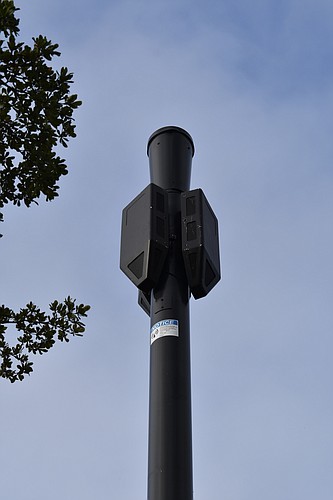- December 19, 2025
-
-
Loading

Loading

Town commissioners on Feb. 28 are scheduled to cast a final vote on a plan presented by Verizon Wireless to erect nine cell-service poles on the north end of the island to remedy chronically spotty service for its customers.
On Tuesday, the town’s Planning and Zoning Board by a pair of 4-1 votes recommended unchanged passage of the telecommunication giant’s proposal that, once built, would also bolster all cell users’ ability to reliably connect with 911 in an emergency.
"On the whole, getting the north end of the town adequate emergency connection and adequate service is an important thing to do, and I give some deference to the technical people who have been up before us as to the fact that this was the best solution under the circumstances they came up with," said Planning and Zoning Board member Jay Plager, who voted in the majority for Verizon’s request for a special exception and a site development plan.
David Lapovsky was the dissenting vote. Member Paul Hylbert, whose home is near one of the nine pole sites, abstained from voting, and Chair David Green was absent.
Board members heard from residents concerned about the locations of the 25- and 35-foot-high poles and heard from the town’s police chief, fire chief and information technology director on the necessity of solid cell-technology service islandwide.
They also heard from Verizon representatives, who explained the methodology used to spot seven 35-foot poles along the right of way on Gulf of Mexico Drive and two 25-foot poles in neighborhoods east of the town’s main road.
Mike Murphy, the director of operations for SMW Engineering Group, explained to the board that each of the nine 4G poles was placed to work together as a unit. Changes in locations of even one of them from the design would create gaps or require additional poles because of differences in local elevations, the effects of metal roofs nearby, adjacent buildings, foliage and even some forms of glass used in windows.
He said that light poles proposed to be installed as part of the town’s underground utilities project were considered to co-locate equipment but that they were not engineered in such a way to support it.
Residents concerned about appearances sought locations across the street or down the block for a variety of reasons, including a location in Emerald Isle across the street from a bald eagle nest.
Brooks O’Hara, the real estate and facilities director for The Chiles Group, said a pole planned for the corner of Broadway Street and Lois Street is within about 15 feet of the sign for MarVista Dockside.
"Any thing they could do to even make this small move, we would appreciate it," he said.
Ashlie Thomison, who spoke just before her husband, Dennis, said heath concerns made her apprehensive about living near one of the poles to be built at the corner of St. Jude Street and Gulf of Mexico Drive. "I don’t want to see anyone get sick," she said. "I don’t want it to be in anyone’s yard if it’s that upsetting."
Board members originally began weighing Verizon’s request in November but put off a decision until February when a groundswell of opposition formed over the location of the nine poles. The Planning and Zoning Board would have been the final arbiter of the issue, but the City Commission in early February voted to assume authority for final decisions on matters connected to cellphone service.
Although local governments have some latitude in a range of decisions regarding cell-service equipment, federal and state laws limit their ability to exert yes or no authority on their installation. Such things as aesthetics and height can be considered.
Following the November meeting’s suspension, Verizon returned with a proposal that placed the poles in the same locations but also returned with deeper explanations of their placement criteria and reasoning.
As part of the town’s presentation, Fire Chief Paul Dezzi, Acting Police Chief George Turner and IT Director Jason Kean explained how critical a robust cell system is islandwide.
Dezzi said that his department depends on the cellular network for a variety of data links first responders use every day, such as connections of an electro-cardiogram in the field to a doctor at a hospital, maps and building layouts transmitted to fire-rescue crews on the way to an emergency scene and as a back-up to the county’s regular radio communication system.
Calls for 911 service via cellphones have risen from 73.7% of the total from town in 2016 to 82.7% in 2021, Dezzi said.
Turner said police officers rely on cell technology in a similar way.
"I believe a cell-tower issue is an officer-safety issue for us," he said.